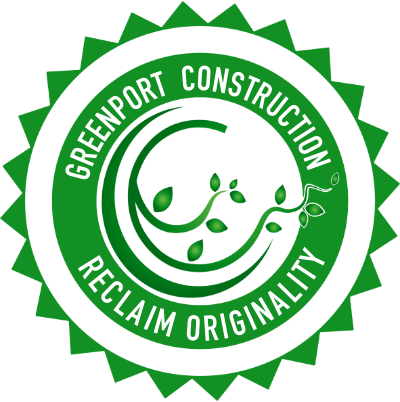Your Ultimate Construction Home Remodel Checklist: Streamline Your Renovation Success
When starting a home remodeling project you can quickly find yourself overwhelmed by a sea of tasks and deadlines. According to recent studies, nearly 60% of homeowners say managing a remodel feels like juggling too many balls in the air. But fear not—an organized approach can turn your renovation chaos into a smooth and successful transformation. At Greenport Construction we take the mental load off your shoulders while keeping you involved 100% of the way.
From coordinating with trade partners to keeping track of budgets and schedules, home remodeling can quickly become a daunting task. It’s easy to overlook essential steps or get bogged down in the details, leading to unnecessary stress and unexpected costs. Our Project Managers have years of experience taking projects from structural planning, floor plan drafting, design consulting all the way to a finished home build.
By breaking down the remodeling process into manageable steps, this checklist will help everyone to stay organized, avoid common mistakes, and ensure every detail is covered from start to finish. Below is a comprehensive construction home remodel checklist.
1. Pre-Remodel Planning:
Define Goals and Budget:
Determine the main objectives of the remodel (e.g., functionality, aesthetics, value).
Set a realistic budget, including a contingency fund for unexpected costs.
Research and Inspiration:
Gather design ideas and inspirations (magazines, online platforms, etc.).
Create a vision board or mood board to visualize your goals.
Hire Professionals:
Hire Greenport Construction to manage your project from start to finish.
For DIY Management:
Research and select contractors, designers, and other professionals.
Obtain and review quotes and contracts.
Check references and review past work.
2. Design and Permits:
Design Development:
Work with a designer/architect/site planner to finalize plans and layouts.
Choose materials, fixtures, and finishes.
Create detailed floor plans and design documents.
Create a design tracking sheet to ensure all design elements are ordered at the correct time within the project scope.
Obtain Permits:
Apply for necessary building permits and approvals.
Ensure compliance with local building codes and regulations.
Site surveys and assessments.
3. Pre-Construction Preparation:
Contractor Coordination:
Finalize the construction schedule with your contractor.
Confirm start and completion dates.
Site Preparation:
Clear the work area of furniture and personal items.
Set up a designated area for construction debris and materials. Rent a debris dump box if needed.
Protect floors and surfaces not being remodeled.
Personal protective equipment (PPE).
Rent a porta-potty for your crews.
Safety signage and barriers.
4. Demolition and Construction:
Demolition:
Remove old fixtures, cabinetry, flooring, etc., as needed.
Ensure proper disposal of demolition debris.
Ensure all protection of elements not being demoed.
Structural Work:
Complete any necessary structural changes (e.g., framing, load-bearing walls).
Inspect and address any issues with plumbing, electrical, or HVAC systems.
Rough-In Work:
Install or adjust plumbing (rough-in, supply lines, drainage and waste lines), electrical wiring, and HVAC systems.
Ensure all rough-ins meet code requirements and are inspected.
5. Interior Work:
Walls and Ceilings:
Complete drywall installation, taping, and sanding.
Apply primer and paint or wallpaper as required.
Flooring:
Install new flooring materials (e.g., hardwood, tile, carpet).
Plumbing:
Fixture Installation: sinks, bathtubs, etc.
Appliance Hook up: dishwasher, washing machine, water heater, refrigerator, etc.
Cabinetry and Fixtures:
Install cabinets, countertops, and vanities.
Install lighting fixtures, electrical outlets, and switches.
Finishing Touches:
Add trim, molding, and any decorative elements.
Install hardware such as handles, knobs, and faucets.
6. Final Inspections and Adjustments:
Final Walkthrough:
Inspect completed work to ensure it meets client’s expectations.
Create a punch list of any remaining tasks or corrections.
Handover of all warranties and manuals.
Final Inspections:
Arrange for final inspections by local authorities (if required).
Obtain a Certificate of Occupancy or other necessary documentation.
7. Post-Construction:
Clean-Up:
Conduct a thorough cleaning of the remodeled areas.
Remove any construction debris and dust.
Move-In:
Reinstall furniture and personal items.
Arrange for any new furnishings or decor items.
Review and Feedback:
Evaluate the performance of contractors and other professionals.
Provide feedback and reviews as appropriate.
8. Maintenance and Follow-Up:
Routine Maintenance:
Schedule regular maintenance for new fixtures, appliances, and systems.
Address any minor issues or adjustments needed.
Warranty and Documentation:
Keep records of warranties and guarantees for new installations.
Store all project-related documents and receipts for future reference.

